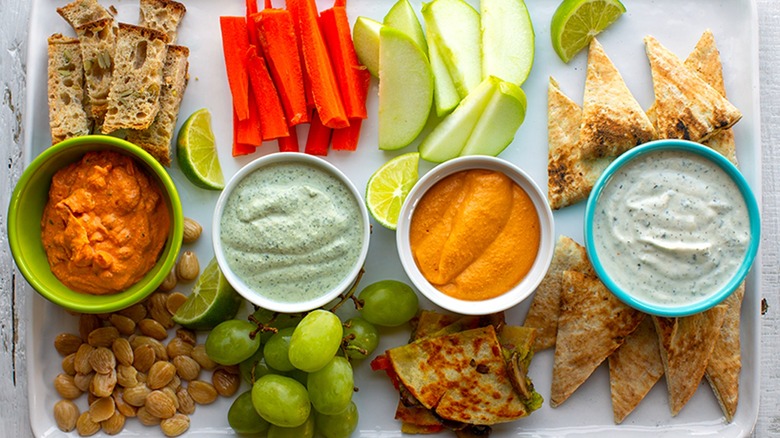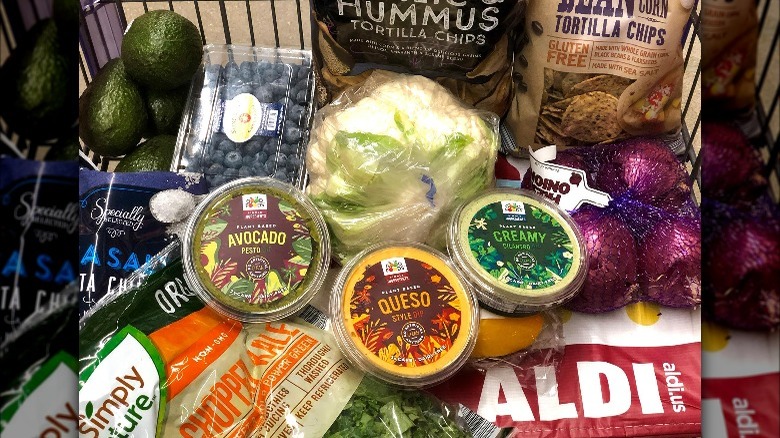Aldi's Plant-Based Dips Are Perfect For Cookouts
Aldi is known for having a wide range of dip options: sandwich-inspired dips, sweet summer dessert dips, and even divisive seafood dips. Given its propensity for offering so many different types, it's no surprise Aldi also sells plant-based varieties. Queso and Buffalo-style are two of the most popular flavors of Good Foods' plant-based dips, so much so that one Instagram user referred to them as their "love language." Each 8 oz dip sells for around $4.59, depending on location.
As you can imagine, these dips are extremely versatile. Sure, you can enjoy them with crackers or chips if you want to keep things simple. However, you can also use them to zhuzh up summer cookout staples. For instance, consider adding some of the plant-based queso to your mac and cheese or drizzle it over grilled veggies. Experiment with the Buffalo-style dip by adding it to quesadillas, nachos, sliders, or stuffed peppers. If you apply some creativity, your cookout guests will likely beg you to disclose your secret ingredient.
More ways to use Aldi's plant-based dips this summer
In years past, Aldi has offered plant-based cilantro and avocado pesto dips from the same brand. Since the queso and Buffalo flavors are popular items — and have been reported to sell out — if you can't find them on the shelves at Aldi, they can be purchased through the Good Foods website. Along with the cilantro and avocado pesto dips, the company offers plant-based tzatziki, spicy queso blanco, and more.
Like its queso and Buffalo dips, the other flavors create new ways to jazz up your tried-and-true summer cookout menu. Avocado pesto, for example, pairs well with veggies like broccoli, peppers, and cucumber as part of an elevated veggie tray. Good Foods' cilantro dip can be spooned over fried fish or used as a spread on chicken sandwiches and your favorite burger recipe.
At the end of the day, using dips in your cookout recipes doesn't just save you time and ingredients but lends an unexpected flavor boost to regular dishes. All you have to do is look at the main components of the dip, see what it compares to, and make substitutions accordingly.

